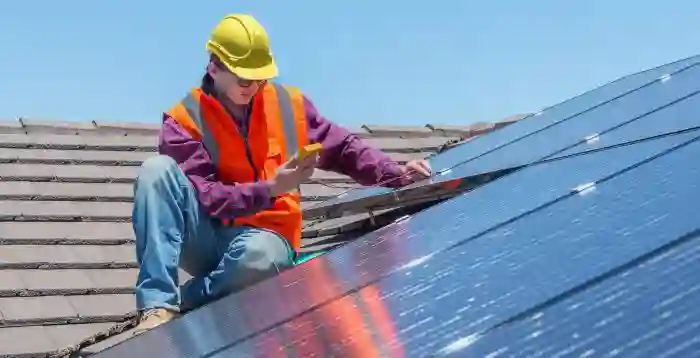Community solar panel projects have emerged as a powerful tool for democratizing access to clean and renewable energy while fostering a sense of community and social responsibility. These projects allow individuals and communities to collectively invest in solar energy systems that provide numerous social benefits beyond the environmental advantages. In this article, we will explore the various social benefits of community solar panel projects and how they are positively impacting communities across the globe.
Energy Equity and Accessibility:
One of the primary social benefits of community solar projects is the promotion of energy equity and accessibility. These projects enable individuals who may not have suitable rooftops for solar installations or lack the financial means to invest in their solar panels to access clean energy. This helps bridge the energy gap and reduces energy inequality within communities.
Inclusive Participation:
Community solar projects encourage inclusive participation from a diverse range of community members. These projects are open to renters, homeowners, low-income individuals, and those who may not have traditionally had access to solar energy. Inclusivity fosters a sense of belonging and shared responsibility within the community.
Lower Energy Costs:
Participants in community solar programs often benefit from reduced energy costs. By collectively investing in solar panels, community members can purchase clean energy at lower rates compared to traditional utility rates. This financial relief can be particularly significant for low-income households, freeing up funds for other essential expenses.
Job Creation and Economic Growth:
The development and operation of community solar projects create job opportunities within the community. From project planning and construction to maintenance and management, these initiatives stimulate local economies and contribute to job growth. These jobs often require a range of skill sets, further diversifying the local workforce.
Education and Awareness:
Community solar projects serve as educational tools that raise awareness about renewable energy and environmental sustainability. Participants and the broader community gain a deeper understanding of how solar energy works and its environmental benefits. This increased awareness can lead to more sustainable lifestyle choices.
Strengthening Community Bonds:
Collaborative efforts to develop and maintain community solar projects strengthen community bonds. Residents come together to work toward a common goal, fostering a sense of unity and shared purpose. This collective action can lead to stronger social networks and increased community cohesion.
Environmental Stewardship:
Participation in community solar initiatives allows individuals and communities to actively contribute to environmental stewardship. By reducing their reliance on fossil fuels and supporting clean energy, participants can take pride in their role in mitigating climate change and reducing carbon emissions.
Resilience and Energy Independence:
Community solar projects enhance the resilience of communities by diversifying their energy sources. In the event of power outages or disruptions, these projects can continue to generate electricity, providing critical support to essential facilities such as hospitals, emergency shelters, and community centers. This increased energy independence enhances the community’s ability to withstand unforeseen challenges.
Supporting Local Initiatives:
Many community solar projects are initiated and managed by local organizations, cooperatives, or community-owned utilities. By participating in these initiatives, community members support local businesses and organizations dedicated to sustainability and community development.
Environmental Education for Youth:
Community solar projects often involve educational components for local schools and youth organizations. Students can learn about solar energy, environmental conservation, and the importance of renewable energy sources. These educational opportunities empower the next generation with knowledge and a sense of responsibility for the environment.
Case Study: Brooklyn Microgrid
The Brooklyn Microgrid, located in the Brooklyn neighborhood of New York City, serves as an excellent example of the social benefits of community solar projects. This microgrid project enables residents to generate, store, and share clean energy within their community. Here are some key aspects of its impact:
- Energy Democracy: The Brooklyn Microgrid exemplifies energy democracy, allowing residents to take control of their energy production and consumption. Participants can choose where their energy comes from, fostering a sense of empowerment.
- Resilience: In the event of power outages, the microgrid can continue supplying electricity to participating homes, ensuring essential services remain operational. This resilience is particularly important in densely populated urban areas.
- Educational Initiatives: The project includes educational programs for local schools, engaging students in learning about renewable energy and sustainability. It instills a sense of environmental responsibility in the community’s youth.
- Community Engagement: The Brooklyn Microgrid promotes community engagement and collaboration, as residents collectively invest in and manage the project. It strengthens social bonds and encourages active participation in sustainable practices.
Conclusion
Community solar panel projects are more than just a source of clean energy; they are powerful tools for driving positive social change within communities. By promoting energy equity, inclusivity, lower energy costs, job creation, education, and environmental stewardship, these projects contribute to stronger and more resilient communities. The social benefits of community solar initiatives extend beyond the environmental advantages, fostering a sense of community, shared responsibility, and a brighter future for all. As these projects continue to grow in popularity, they hold the potential to drive significant social transformation while accelerating the transition to clean and sustainable energy sources.








